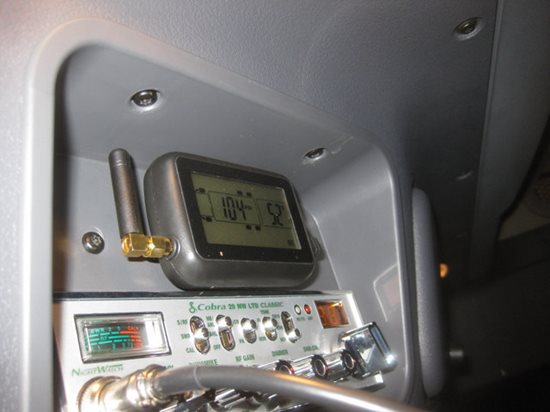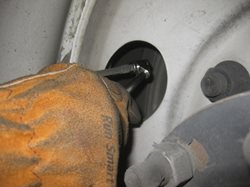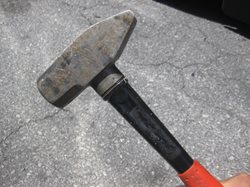 |
A great way to maximize your tire life is by making sure you have the proper air pressure in your tires. You can find information on how to obtain the correct pressure for your tires on any of the tire manufactures websites. It’s important to have the pressure set in accordance to the maximum load you plan on carrying. Consult the load inflation tables to find the pressure that’s right for your operation.

Checking your tire pressure should be part of your daily pre trip inspection. If I’m really busy, I at least make sure to use a tire thumper or a hammer to check for a low tire. This is by far not an accurate way to check tires however it’s better than not checking them at all. The problem with using any of these methods is that you can run over a nail in the parking lot or pick one up during your travels.
Today, we have options as there are many tire pressure monitoring systems (TPMS) I use the one offered by Truck System Technologies (TST) I really like knowing that all my tires are properly inflated at “all times”, not just when I’m checking the tire with a gauge. The system also informs you of the temperature of the tire. This information may give you an early warning to a failing wheel bearing or a dragging brake shoe.
 This subject leads me to reflect on an experience I had years ago. I had just purchased eight brand new drive tires. The route for my shipment was from North Carolina to Florida. Prior to leaving on the trip, I made sure to check the pressure on each tire to make sure they were all equally inflated. All appeared well and I proceeded to my Orlando destination. I took my usual break in Georgia. Upon getting out of the truck and doing a walk around check, I noticed the tread on the inside left lead axle of the tandem was distorted. I tapped the tire and discovered it was almost completely flat. I began to look for a possible nail or puncture and couldn’t find anything. I used my air hose to refill the tire. No lead was to be found however, in looking at the tread, it was obvious that the tire had over heated. I then filled the tire and still couldn’t detect any type of leak. I decided to proceed down the road and stopped to purchase another matching tire. The technician looked over the tire with me and we couldn’t find any leaks. Finally we determined that a small piece of dirt or debris must have hung up in the valve stem. If back then, I had a simple tire monitor system as discussed above, I would have been alerted much earlier that I had a slow leak. Years ago, the tire cost me $350.00. Today, that same tire costs much more money to replace.
This subject leads me to reflect on an experience I had years ago. I had just purchased eight brand new drive tires. The route for my shipment was from North Carolina to Florida. Prior to leaving on the trip, I made sure to check the pressure on each tire to make sure they were all equally inflated. All appeared well and I proceeded to my Orlando destination. I took my usual break in Georgia. Upon getting out of the truck and doing a walk around check, I noticed the tread on the inside left lead axle of the tandem was distorted. I tapped the tire and discovered it was almost completely flat. I began to look for a possible nail or puncture and couldn’t find anything. I used my air hose to refill the tire. No lead was to be found however, in looking at the tread, it was obvious that the tire had over heated. I then filled the tire and still couldn’t detect any type of leak. I decided to proceed down the road and stopped to purchase another matching tire. The technician looked over the tire with me and we couldn’t find any leaks. Finally we determined that a small piece of dirt or debris must have hung up in the valve stem. If back then, I had a simple tire monitor system as discussed above, I would have been alerted much earlier that I had a slow leak. Years ago, the tire cost me $350.00. Today, that same tire costs much more money to replace.
Be sure to check tire pressure when the tires are cool. Sun and heat can make a big difference in regards to tire pressure. I think the best time to check is in the morning before the sun comes up. Tire pressure is important to safety as well as fuel efficiency.